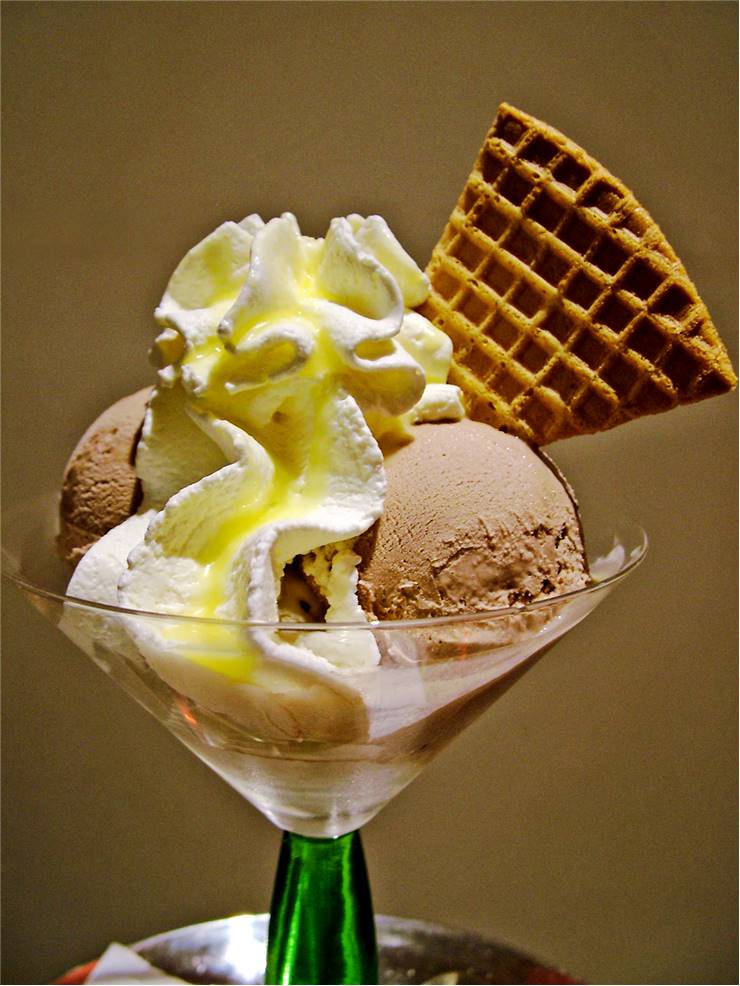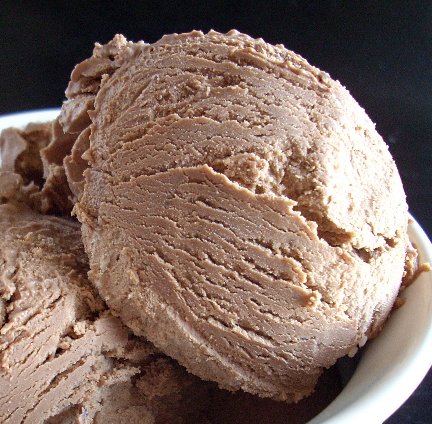The Ancient Origins Of Ice Cream

Ice cream, beloved by people worldwide, has ancient origins that can be traced back to Mesopotamia around 1200BC. In this ancient region, which encompasses present-day Iraq, Iran, Syria, and Turkey, early versions of ice cream were already being enjoyed. From sticky cones of vanilla and chocolate to elegant scoops of exotic fruit sorbet, this icy treat has been a delight for centuries. Even Alexander the Great was known to be a fan. The evolution of ice cream continued throughout history, leading to the delicious treat we enjoy today.
Early References To Frozen Treats In Ancient Civilizations
In ancient civilizations, there were early references to frozen treats that resembled ice cream. Persians in the 5th century BC enjoyed sweetened drinks that were chilled with ice, while Romans in the 1st century AD had recipes for desserts sprinkled with snow. These early versions of frozen treats laid the foundation for the development of more sophisticated ice cream recipes in the future. The indulgence in cool, refreshing desserts has been a part of human history for centuries, and it continues to be a beloved treat around the world today.
The Discovery Of Milk Ice In Early China
In early China, around 2000 BCE, farmers began milking their animals and discovered milk ice. Milk quickly became a prized commodity among the Chinese nobility, who enjoyed consuming it in the form of a soft paste made from overcooked rice, spices, and milk. This early discovery laid the foundation for the development of more sophisticated frozen desserts in the future. The Chinese fascination with frozen treats would eventually make its way to other parts of the world, including Italy, where it would be further refined and transformed into the ice cream we know today.
Medieval Ice Cream In Europe

Medieval Ice Cream in Europe:
During the Middle Ages in Europe, frozen desserts continued to evolve. In the Middle East, sorbets made from fruit juices and sweetened with honey or sugar became popular. These refreshing treats were introduced to Europe through trade routes, and soon became favorites among the nobility. However, it wasn’t until the Renaissance period that ice cream truly gained popularity in Europe. The Italian courts, known for their love of culinary indulgence, began experimenting with different flavors and textures, paving the way for the birth of modern ice cream.
The Development Of Sorbet In The Middle East
The Middle East played a crucial role in the development of sorbet, a predecessor to modern ice cream. During the Middle Ages, sorbets made from fruit juices and sweetened with honey or sugar became popular in the region. These refreshing treats were introduced to Europe through trade routes and soon became favorites among the nobility. The Middle East’s use of fruit and sweeteners in frozen desserts laid the foundation for the popularity of sorbet and eventually led to the birth of modern ice cream in Europe.
Ice Cream In Europe’s Royal Courts
Ice cream made its way into Europe’s royal courts during the Renaissance. The exotic frozen treat quickly became a luxurious indulgence among the aristocracy. In France, King Louis XIV, known as the “Sun King,” had a particular fondness for ice cream and established an ice cream kitchen in his palace at Versailles. The French nobility embraced this decadent dessert, and it soon became a symbol of wealth and power. Ice cream continued to be a staple at royal banquets and feasts throughout Europe, solidifying its status as a delicacy fit for kings and queens.
The Birth Of Modern Ice Cream

The birth of modern ice cream can be traced back to Italy during the Renaissance. It was during this time that flavored ices, known as “sorbets,” became popular. These sorbets were made by combining fruit juices with sugar and freezing them. Eventually, the Italians discovered a way to incorporate milk into these frozen treats, creating a creamier and more luxurious version. This marked the creation of Italian-style ice cream, which would later influence the development of French-style ice cream. The introduction of milk-based ice cream opened up a world of possibilities for flavors and textures, paving the way for the diverse range of ice cream options we enjoy today.
The Introduction Of Flavored Ices In Italy
During the Renaissance in Italy, the introduction of flavored ices revolutionized the frozen treat scene. Italians began combining fruit juices with sugar and freezing them, creating what would later be known as “sorbets.” These sorbets quickly gained popularity and were enjoyed by the upper class. However, it wasn’t until the Italians discovered a way to incorporate milk into these frozen treats that Italian-style ice cream was born. The addition of milk created a creamier and more luxurious texture, setting the stage for the development of French-style ice cream.
The Creation Of French-style Ice Cream
French-style ice cream, also known as crème glacée, was created during the 17th century. It was a result of the French chefs’ culinary creativity and their desire to enhance the flavor and texture of ice cream. French-style ice cream is characterized by its rich and creamy consistency, achieved by using a custard base made with egg yolks, sugar, and cream. The addition of egg yolks gave French ice cream a smooth and velvety texture, setting it apart from other varieties. French-style ice cream soon became popular in France and eventually spread to other parts of Europe and the world.
Ice Cream In America

Ice cream quickly made its way to America, with the first recorded instance of ice cream being served in colonial America in the 18th century. Ice cream was considered a luxury reserved for the wealthy, as the ingredients were expensive and not readily available. However, with the development of insulated ice houses in the 19th century, ice cream became more accessible and affordable. The ice cream industry in America began to thrive, with Jacob Fussell pioneering the mass production of ice cream in 1851. Ice cream parlors started popping up, and it became a popular treat enjoyed by people of all backgrounds.
Ice Cream’s Arrival In Colonial America
Ice cream quickly made its way to America, with the first recorded instance of ice cream being served in colonial America in the 18th century. Ice cream was considered a luxury reserved for the wealthy, as the ingredients were expensive and not readily available. However, with the development of insulated ice houses in the 19th century, ice cream became more accessible and affordable. The ice cream industry in America began to thrive, with Jacob Fussell pioneering the mass production of ice cream in 1851. Ice cream parlors started popping up, and it became a popular treat enjoyed by people of all backgrounds.
The Rise Of Ice Cream Parlors And Mass Production
With the increasing popularity of ice cream, ice cream parlors began to emerge in the late 19th century. These parlors provided a dedicated space for people to enjoy their favorite frozen treat. The introduction of mass production techniques further contributed to the growth of the ice cream industry. Jacob Fussell, known as the “Father of the Ice Cream Industry,” pioneered the mass production of ice cream in 1851. This allowed for ice cream to be produced on a larger scale, making it more accessible to the general public and leading to its widespread availability.
Innovations And International Influences

Innovations and international influences have played a significant role in shaping the world of ice cream. One notable innovation is the invention of the ice cream cone, credited to Italo Marchiony and Antonio Valvona in the late 19th century. This invention revolutionized the way ice cream was served, providing a convenient and edible container.
Italian gelato also had a profound influence on ice cream worldwide. Known for its rich, dense texture and intense flavors, gelato has gained popularity globally. Other international variations, such as Thai rolled ice cream and Japanese mochi ice cream, have also made their mark, adding diversity to the ice cream landscape. These innovations and international influences continue to inspire new flavors, techniques, and experiences for ice cream lovers around the world.
The Invention Of The Ice Cream Cone
The invention of the ice cream cone is credited to Italo Marchiony, an Italian immigrant living in New York in 1903. He came up with the idea of a cone-shaped pastry that could hold ice cream, making it easier to enjoy the frozen treat while on the go. Marchiony’s invention revolutionized the way ice cream was served, providing a convenient and edible container. Today, the ice cream cone is a beloved classic, allowing people to enjoy their favorite flavors in a portable and delicious way.
Italian Gelato And Other Variations Worldwide
Italian gelato, known for its rich and creamy texture, is a beloved variation of ice cream. Gelato originated in Italy and is made with a higher proportion of milk to cream, giving it a denser and smoother consistency. It is often served at a slightly warmer temperature compared to traditional ice cream, allowing its flavors to be more intense and vibrant. In addition to gelato, there are a variety of other international variations of ice cream, such as Turkish dondurma, Indian kulfi, and Thai rolled ice cream, each offering unique flavors and textures. These global variations continue to expand the world of ice cream and delight taste buds around the world.
The Continuing Evolution Of Ice Cream

As time has passed, ice cream has continued to evolve and adapt to changing tastes and preferences. Today, modern ice cream offers a wide variety of flavors, from traditional favorites like chocolate and vanilla to more adventurous options like salted caramel and matcha green tea. Additionally, there has been a surge in the popularity of alternative options such as dairy-free and vegan ice creams, catering to those with dietary restrictions. The future of ice cream holds even more exciting possibilities, with advancements in technology and flavor innovation. Who knows what delicious creations await us in the world of ice cream?
Modern Ice Cream Trends And Flavors
Modern ice cream has come a long way since its humble beginnings. Today, there is an abundance of exciting trends and flavors in the world of ice cream. Some popular modern trends include the incorporation of unique and exotic ingredients such as lavender, bacon, or even cheese. Other trends focus on healthier options, like using non-dairy alternatives or reducing the amount of sugar in the recipe. Additionally, artisanal and small-batch ice cream makers are gaining popularity, offering handcrafted flavors and innovative combinations. Whether it’s classic flavors or bold experiments, there is something for everyone’s taste buds in the modern ice cream scene. [31]
The Future Of Ice Cream Innovation
The future of ice cream innovation holds exciting possibilities for new flavors, textures, and even methods of production. As technology continues to advance, we can expect to see ice cream makers experimenting with unique ingredients and flavor combinations. Some possible innovations include incorporating plant-based ingredients to cater to the growing demand for vegan options, utilizing 3D printing technology to create intricate and visually stunning designs, and exploring the use of alternative sweeteners to reduce sugar content without compromising taste. Additionally, there may be advancements in texture and consistency, such as the development of creamier and smoother ice creams. With endless opportunities for creativity, the future of ice cream is sure to be filled with delightful surprises.
FAQ: Where was ice cream invented?
Question 1: Who invented ice cream?
Answer: The invention of ice cream is attributed to many ancient civilizations. However, the exact origins of ice cream are unclear as it has been enjoyed in various forms throughout history. It is believed that the Chinese were among the first to create a frozen dessert resembling modern-day ice cream, as early as 200 BC.
Question 2: Where is the oldest evidence of ice cream?
Answer: The oldest evidence of ice cream-like desserts comes from ancient Persia (modern-day Iran) dating back to the 5th century BC. It was known as “faloodeh,” a sweet frozen treat made from rose water and vermicelli, and served to Persian royalty. The method of making faloodeh involved freezing a mixture of water and fruit juices using ice packed from the mountains.
Question 3: When did ice cream reach Europe?
Answer: Ice cream was introduced to Europe through the conquests of Alexander the Great, and it became popular in Italy during the Renaissance. Italian chefs and cooks developed new techniques and flavors for ice cream, turning it into an art form enjoyed by European nobility.
Question 4: When did ice cream reach America?
Answer: Ice cream was brought to America by European settlers in the 18th century. The first ice cream shop in America opened in New York City in 1776, serving a variety of flavors. It quickly gained popularity, and ice cream became an integral part of American cuisine.
Question 5: Where was the cone for ice cream invented?
Answer: The invention of the ice cream cone is attributed to the 1904 World’s Fair held in St. Louis, Missouri, USA. A Syrian concessionaire named Ernest A. Hamwi was selling waffles next to an ice cream vendor. When the ice cream vendor ran out of dishes, Hamwi rolled his waffles into a cone shape to hold the ice cream, giving birth to the delicious ice cream cone.
Question 6: Where does the modern ice cream industry thrive?
Answer: The modern ice cream industry thrives in many countries around the world. However, the leading producers and consumers of ice cream are the United States, followed by China, Japan, and Germany. These countries have a rich tradition of ice cream consumption and varied flavors.
Question 7: How has ice cream evolved over time?
Answer: Over time, ice cream has evolved into a diverse and global treat. New flavors, ingredients, and techniques have been introduced, leading to a wide range of options. From traditional classics to modern innovations like gelato and vegan alternatives, the world of ice cream continues to delight taste buds of people from all walks of life.

Soo Good Snack Bar is an upscale snack shop located at 1309 Hermosa Ave. in Hermosa Beach, CA. This family-owned business is the newest addition to the community of Hermosa, and our goal is to create a fun and inviting place where families can enjoy delicious snack foods that fit the beach lifestyle. Check us out today and help yourself to happiness.
